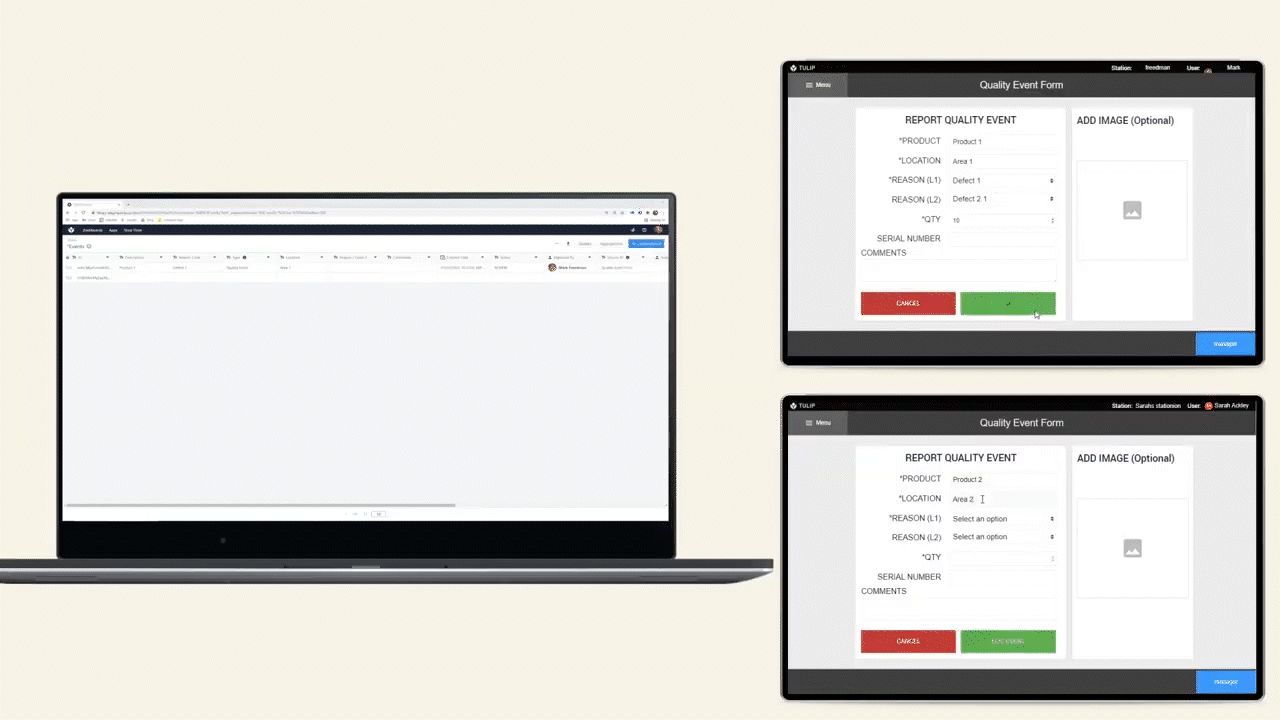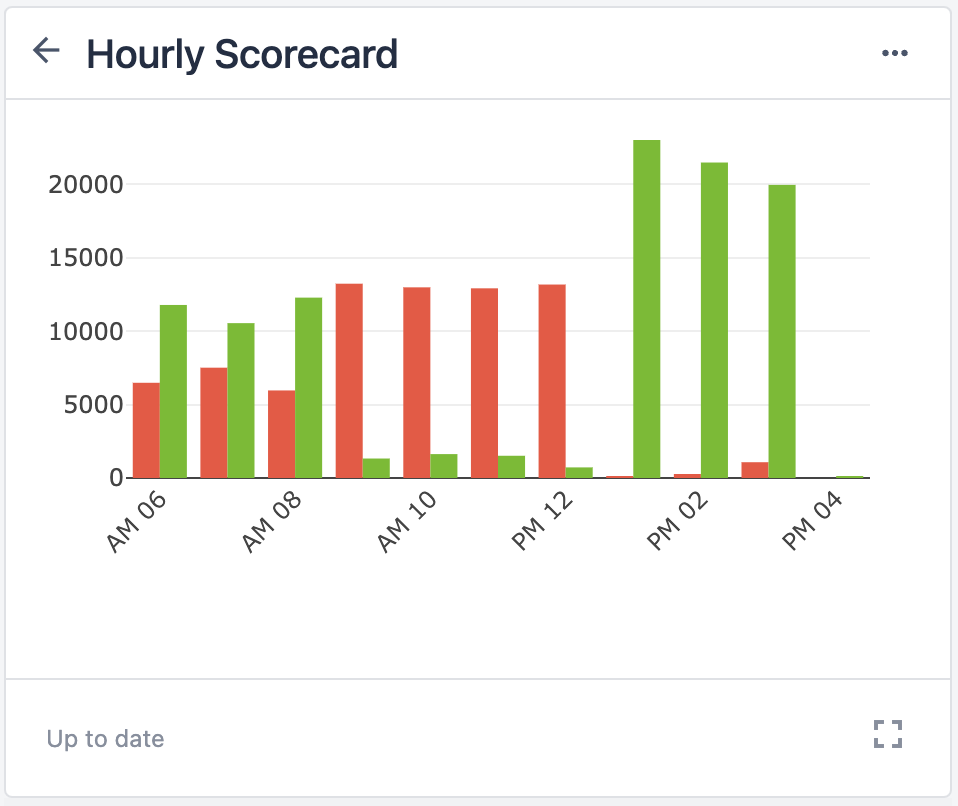Purpose
Defect tracking is essential to the identification of root cause in nearly every manufacturing operation. Ditch those Excel sheets, paper forms, and manual data entry with a dedicated application to streamline and stabilize the data collection process.
Tulip can support every part of the process for building out a robust defect tracking machine. Users can collect data in a dedicated (or integrated) app, stored to Tables, and analyzed with Analytics.
Overview
This Functional Example will cover the core concepts needed to understand how to approach Defect Tracking within Tulip. This documentation and the Apps associated with it aren't intended to be run in production, but rather as tools to teach all of the core concepts and approaches needed to achieve this use case.
Explore the Content
This documentation folder should give you enough information to understand.
App Architecture
Success starts with the right interfaces for your users. The app architecture will talk you through the existing app architecture, and provide recommendations on how apps could be configured to empower your workforce.
Data Model
Getting the data organized in a scalable way is essential to driving business decisions at lightning speed. This document will walk you through the recommended data architecture to drive value.
Data models are never one-size-fits-all. With Tulip we make it incredibly easy to extend a core data model to fit your process needs. The data model is followed throughout this Functional Example is a great starting point, but won't perfectly fit your needs (or anyone else's).
Extend the Concept
Functional Examples are intended to stand alone but much of the value of Tulip comes when you incorporate the concepts of order track with others.
This document will walk through some opportunities to extend defect tracking to drive even more business value, without tons of extra work.


